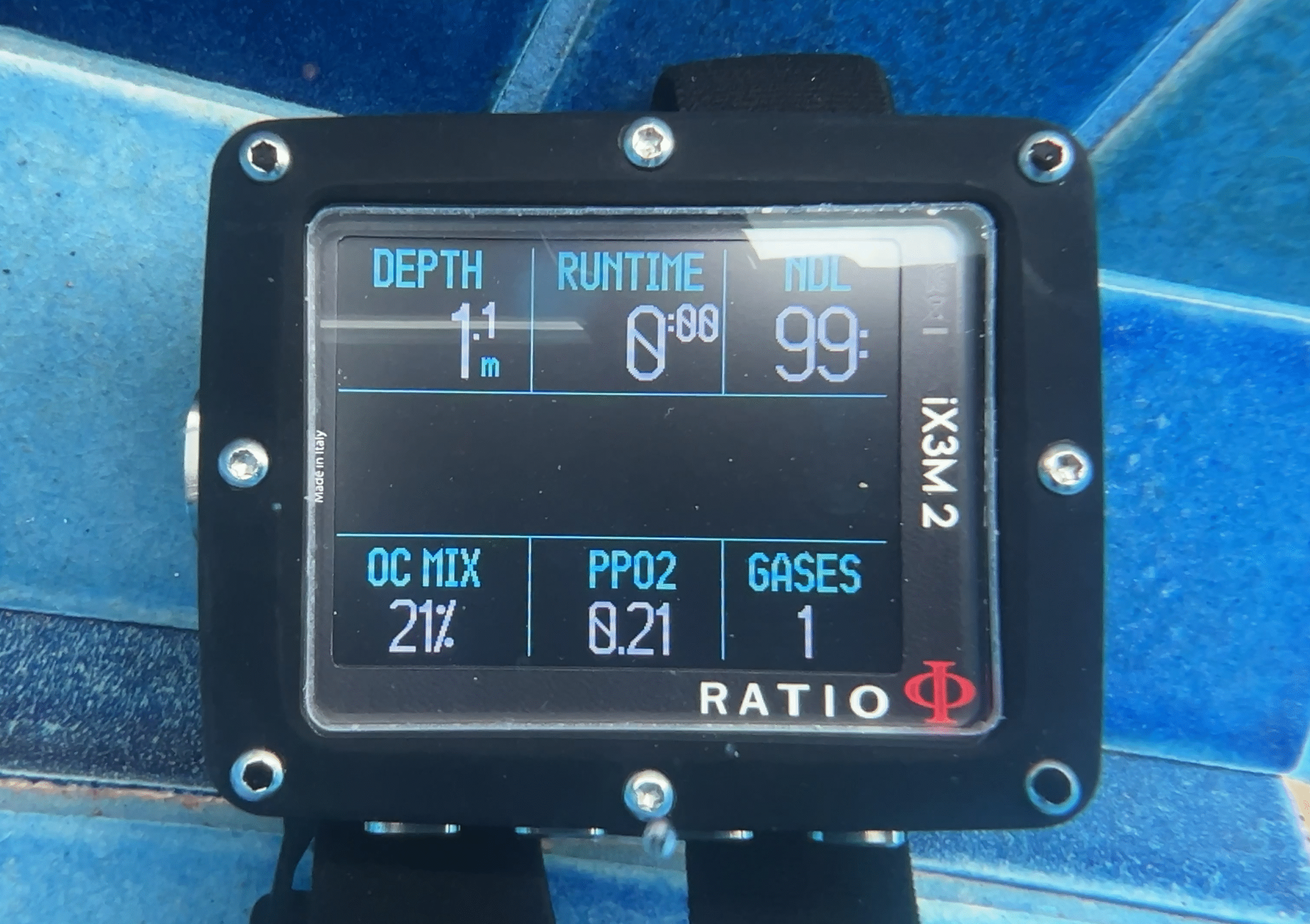Vandit Kalia, 25 July, 2025
Based out of Italy, Ratio has been slowly and steadily making a name for themselves as a maker of very robust, full-featured dive computers, with many divers swearing by them as a credible alternative to Shearwater.
Now, those of you who have dived with me know that I am a huge fan of Shearwater computers and we recommend them without reservations for anyone looking for a dive computer, regardless of level. So when I had 2 experienced dive buddies recommend Ratio, it piqued my interest. And luckily, Ratio is now available in India – so I requested a couple of units to test and review. A week later, I had a couple of demo units in my hand for review, and took them to our weekend diving camp in Pondicherry, where I put them through their paces.
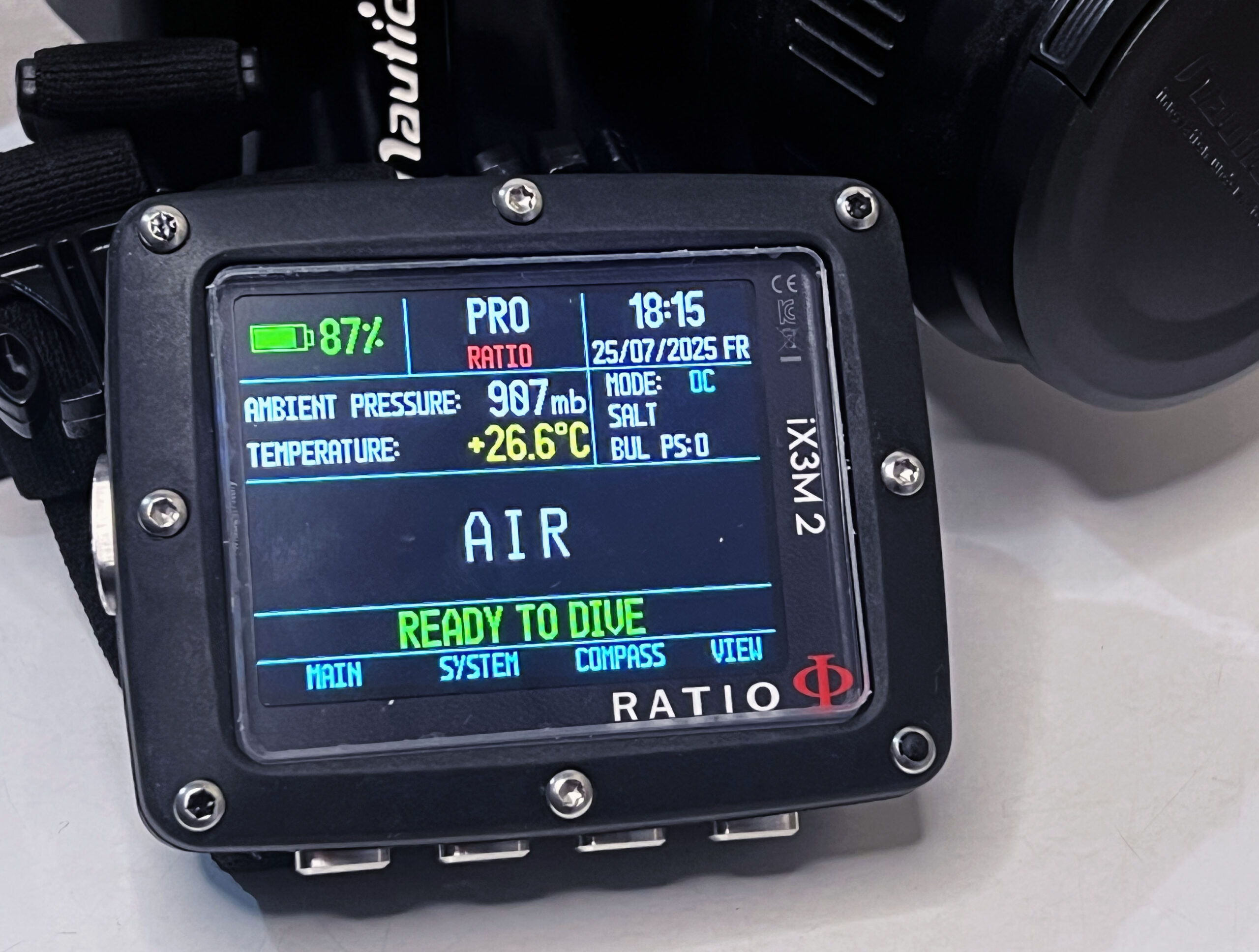
Disclaimer: the units I am testing have been sent to me for review and I will be returning them after the review is done. No large sums of money changed hands (unfortunately).
In this article, I will be reviewing the Ratio iX3M2, an oversized, tech-focused dive computer. In. addition, I will have a separate review of the Ratio iDive Color published as well.
VIDEO REVIEW: RATIO IX3M2 & iDive COLOR
While the article talks about key features of the units, the video has a detailed screen-by-screen breakdown of the computer’s settings and displays, for those who want to get an in-depth look at the unit.
FEATURES
This is an oversized, chunky dive computer with a 2.8″ screen that looks like a Shearwater Perdix on steroids (or maybe it’s just eaten a Perdix for breakfast?), and is designed for both recreational diving and tech diving, with a heavy emphasis on tech-friendly features.
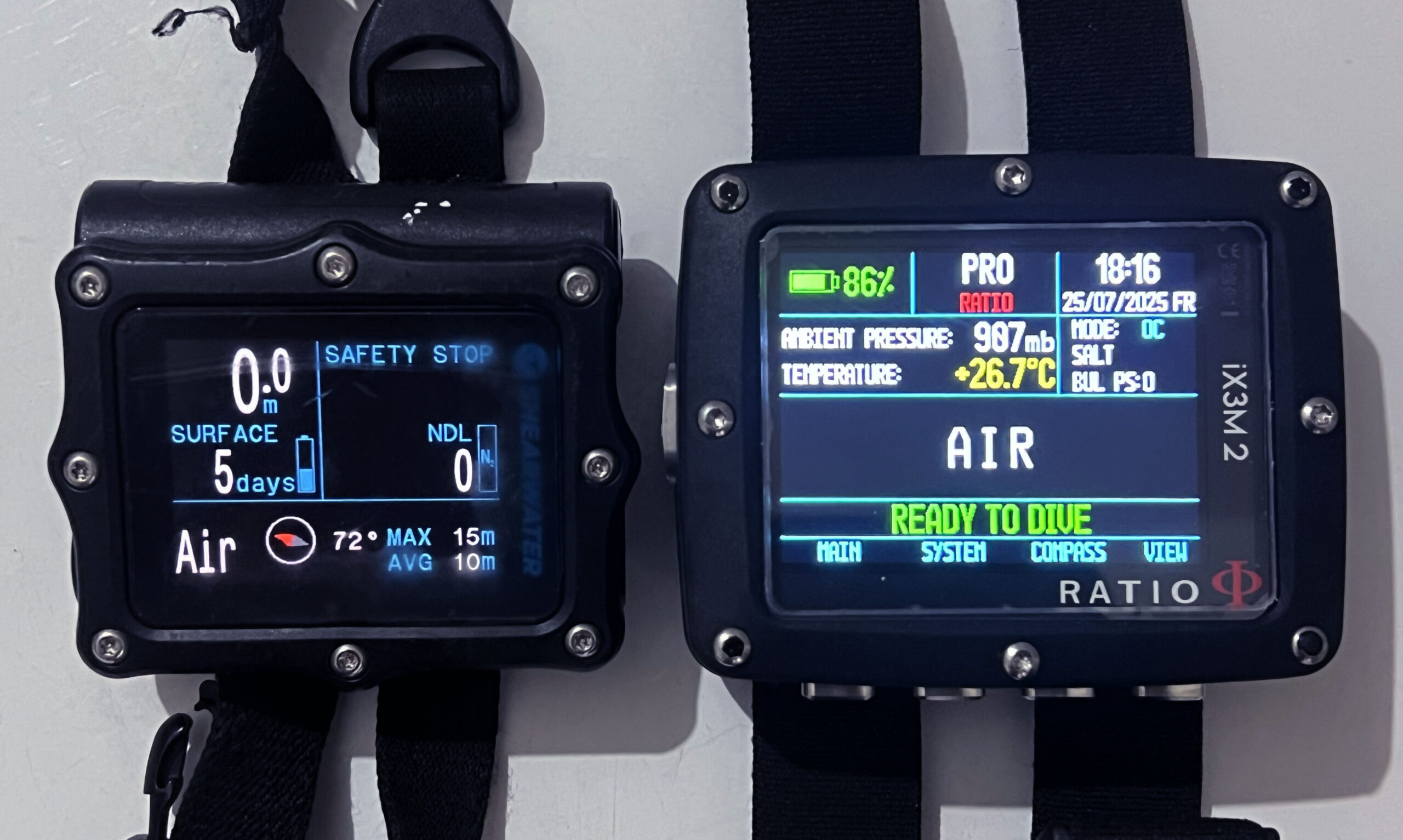
There are 2 variants of the iX3M2 dive computer – one with a built-in GPS and one without. Within each of these variants, there are 3 models lines: the Pro, the Deep and the Tech. The unit I have is the Pro but most of the details of the review also apply to the other models as well, and I will talk about those differences as they come up.
Like virtually every computer these days, the IX3M2 Pro has gauge, freediving and nitrox modes. It also has a built-in compass with some nice features like lockable directions and 85% tilt compensation. And it comes with 3-factor alarm – visual, acoustic and vibration, thereby reducing the chances of the diver missing an alert – you can set alarms for ascent speed, MOD, gas reserve (if using a transmitter), NDL, deco violation, time and depth. And the computer also offers automatic altitude adjustment.
In addition, the computer lets you use up to 3 gas mixes, which is covers most air-based open circuit tech diving.
And while on the topic of decompression, the iX3M2 uses the modern Buhlman ZHL-16C algorithm, which is suitable for both recreational and tech.
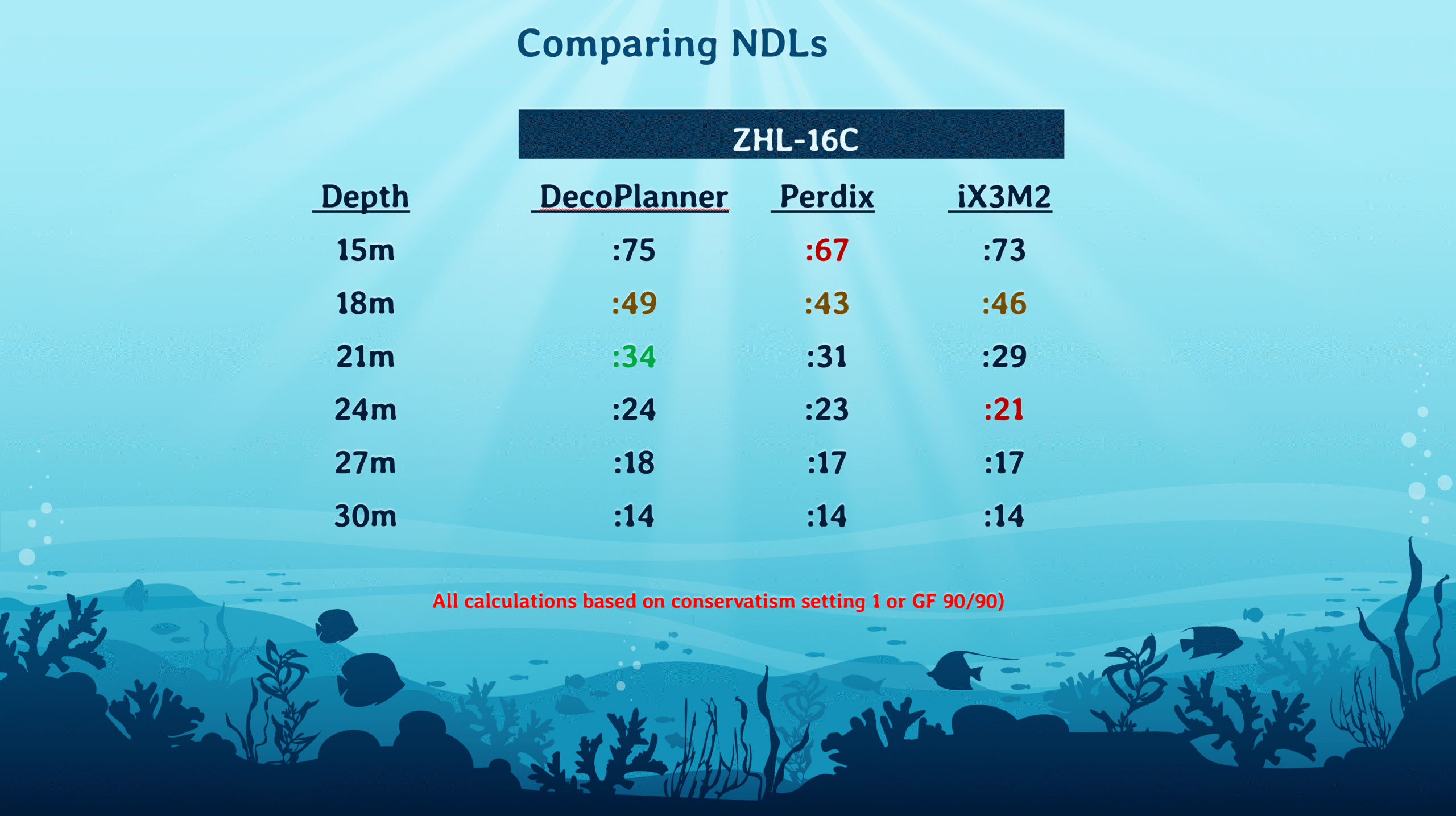
Interestingly, not all ZHL-16Cs seem to be the same. Above, I have compared the iX3M2’s NDLs with that of the Shearwater Perdix and Decoplanner (my reference, for the simple reason that this is the software I learned to do tech on, back in the 1990s). As you can see, both the Perdix and the iX3M2 are slightly more conservative than the stock model, likely due to small tweaks in model variables, but for the most part, there arent any significant difference that would have a huge impact on your bottom time.
As with virtually every computer, you can change the conservatism of the unit via 6 settings, as shown below (ability to set custom Gradient Factors only becomes available on the top model). 
It has a tech focused dive planner where you enter dive depth and time, and it will much NDL you will have left at the end (or how much deco you need to do), as well as how much air is needed for that dive. This is slightly different from the typical recreational dive computer planning mode, which simply give you a range of NDLs for various depths. Is it better? That depends – and I discuss this more in this article on Real World Dive Planning For Recreational Diving. Regardless. for your planned dive, this computer will also use your planned profile and gas mixes to prepare a run table (albeit without validation of CNS, potential of counter diffusion or gas volumetric availability).
And then there are some neat little add-ons that make it super interesting.
For one, you can purchase an optional analyser accessory that plugs into the unit and lets you set the computer directly from the testing unit – attach one end of the accessory to the computer and use the analyser on the other end to test your Nitrox mix, and the number will show up on your computer, for you to save. Super cool!

There are also some neat features for tech divers diving with multiple gases (3 allowed in the Pro model): the computer actually gives you an alert when a better mix is available (based on your depth and entered gas mixes), and you have the option of approving or rejecting the switch. In addition, once you go into deco, the computer shows you a table with your entire decompression schedule listed in a single place, so you know the overall plan.
A cool feature of the computer is the integrated gas blender app – here, you enter into the iX#M2 what’s inside your tank and what your desired mix is, and it tells you how to obtain that chosen mix – both for nitrox and trimix! A very convenient feature indeed!
 The iX3M2 series all offer air integration, letting you pair up to 3 wireless transmitters to each computer – perfect for a twinset and two stage bottles.
The iX3M2 series all offer air integration, letting you pair up to 3 wireless transmitters to each computer – perfect for a twinset and two stage bottles.
The Deep version of the dive computer adds the following features: normoxic trimix, ability to choose between multiple algorthims (Buhlmann Z12/Z16B/Z16C and VPM-B)
The Tech version adds: full trimix, ability to use up to 10 gas mixes (!!), user settable Gradient Factors and user settable Critical Bubble Radius
The only issue I have with the feature set is that you need the top-end version in order to get user-settable gradient factors when even an entry-level Shearwater Perdix or Garmin lets you do so. I can understand not having it in base model (Air only) where the 6 settings available cover pretty much all use cases. But for trimix, even hypoxic trimix which is available in the Deep model, having the option to choose your own gradient factors is quite nice. So it is a bit vexing that Ratio left this only for the highest version of the computer – it seems like a blatant attempt to upsell the upgrade from Deep to Tech.
Speaking of the different versions and upgrades: the saving grace of all this is that if you want to upgrade the features, you can do so via a software upgrade using Ratio’s Toolbox app and an upgrade code (purchasable online). So atleast you arent’s stuck with a limited unit if you miss certain features later (something I see with a lot of Shearwater Peregrine users, especially now that the Peregrine TX is out).
Do note that the software upgrade doesn’t allow you to go from a non-GPS to a GPS variant of the computer, however.
The Toolbox app also lets you customise the unit a little, download/view your dives, install app upgrades. see the location of the dives (on GPS-enabled models) and more. 
Lastly, the unit comes with a rechargeable battery that uses a USB cable with a proprietary locking connector on the other end. This connection is very secure and ensures that the unit won’t accidentally come loose. However, one thing that would have been nice would have been to have a more standard charging mechanism as well – eg, wireless charging, as with the Shearwater Peregrine. That would reduce the risk of being dependent on a proprietary cable while out on a dive trip.
SET UP
I have to admit – I was taken aback when I first switched on the unit simply because of the amount of info on the Home Screen. I mean, look at that:

But after some thought, I realised this was a “me” problem: I am simply used to more spartan displays. And the info on the Home Screen is actually quite useful at letting you know your computer’s settings at a glance. About the only nit I would pick is changing the prominence of various parts of the displays: more screen space for mode/GF, less for ambient pressure and temperature, for example.
One cool feature – with the Ratio Toolbox App, you can change the “RATIO” on the main screen with your name, if you want: a great way of personalising your unit.
Once you get past that, the computer’s interface is very easy to understand: the 4 button layout with context-sensitive labelling makes it very easy to figure things out without reading the manual (you still should, though!).
The linked video above has a detailed breakdown of the menu structure, and what does what, but the main takeaway is that it is very easy to change key settings like nitrox.
 The computer also lets you personalise the colours for the various display elements – menu items, chosen menu options, field labels and field data. So if you are more sensitive to one color, or have a presence on what should be blue, yellow or green (I do!), you can set it up exactly the way you want.
The computer also lets you personalise the colours for the various display elements – menu items, chosen menu options, field labels and field data. So if you are more sensitive to one color, or have a presence on what should be blue, yellow or green (I do!), you can set it up exactly the way you want.
USE
In the end, a computer is a tool – all the bells and whistles in the world mean nothing if the display is hard to read or understand while diving, or the computer starts doing stupid things as a response to various common diving occurrences.
I am happy to report that the Ratio does NOT do any such thing.
When you start diving, the display becomes very intuitive and easy to follow, with the top row providing depth, time and either NDL or TTS (Time to Surface). A color coded arrow shows ascent rate (green, yellow or red, depending on whether you are slower than, at or faster than 9 m/min).

The bottom row provides ancillary information, such as maximum depth, PPO2 and current mix. By pressing one of the buttons at the bottom, you can toggle through other info like water temperature, average depth, ascent rate, gradient factors, OTUs, total CNS and time. You also get access to a stop-watch.
A different button press also toggles to the compass view, with essential dive info still visible:

You can program in a direction to follow and then get a visual indicator if you are off target as well as prompts for reciprocal heading (no more fussing with the bezel and lubber lines!).
And that brings us to the middle row. For the most part, this is going to be empty for recreational diving – it will only show safety stop info or, if you have done a deco dive, the decompression schedule.
At first blush, this seems like a big waste of space – however, after seeing how often divers conflate deco info with no deco time, I like the idea of presenting deco info in a separate place from NDL. It simply reduces the chances of user error.

Tech divers will appreciate the amount of deco info presented in an easy to understand format: you see your target deco stop depth and duration as well as overall TTS. And what I REALLY like about this computer is that a button press lets you see your entire deco schedule, so you can count down the minutes till you can take your dry suit off and relieve the Squeeze:

Between the Ratio’s planning mode and this, you have a full fledged deco planner on your wrist (of course, you will still want a slate table as a backup).
This is an absolutely fantastic feature for tech divers.
Battery life of the unit is also very robust – I tested it over 5 dives on 3 days, and spent a week or so playing around with features, taking shots for this article and the video, and the unit still had 87% battery left. The stated battery life is 20 hours – I think getting 30-35 dives out of a single charge should be very reasonable. My threshold for a dive computer is that it should cover a week’s diving holiday without needing a charge, and this will easily accomplish that.
There are two minor issues I noticed with the computer, however.
For starters, the safety stop implementation is quite strict – you have to be very close to the 5m depth for the timer to count down, unlike the Shearwater which lets you be anywhere between 3-8m (so you can take a few more photos or go a bit deeper to avoid clusters of other divers). However, the computer doesn’t penalise you if you skip the safety stop, so you could simply count out 3 minutes yourself and spend them between 3-8m to achieve the same result without any penalties on NDL on subsequent dives.
The second issue could be a “me” issue, but I found the straps quite hard to tighten one-handed. I am used to loosening the straps, sliding on the unit and tightening them – with the Ratio, I had to use the elasticity of the straps to slide it over, which is marginally more tedious. And in other news, there is a pea under my mattress and I cannot sleep because of it.
THE WIRELESS AIR TRANSMITTER
One very unique feature about the Ratio dive computers is the wireless air transmitters that pair with them, and are available as an optional purchase.
The transmitters have a a bright LED that flashes green until 100 bar, then yellow until 50 bar is reached, at which point it flashes red. This feature allows the dive guide or buddy to also monitor the air of a diver, and reduces the risk of divers unknowingly running out of air.
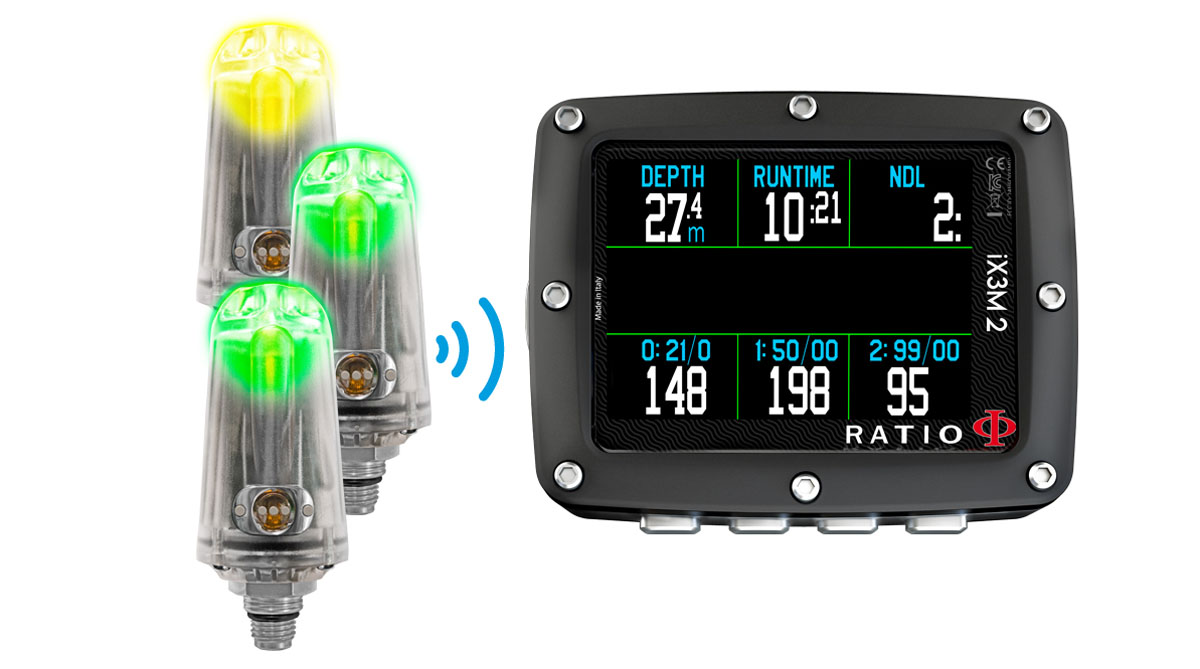

Also of interest to side-mount divers will be the fact that the dive computer has a Multi Transmitter mode. Here, the dive computer will automatically track tank switches and display the air pressure of the tank that is currently being breathed, but will provide an air time remaining that takes into account the air in both the tanks. That’s a really smart feature!
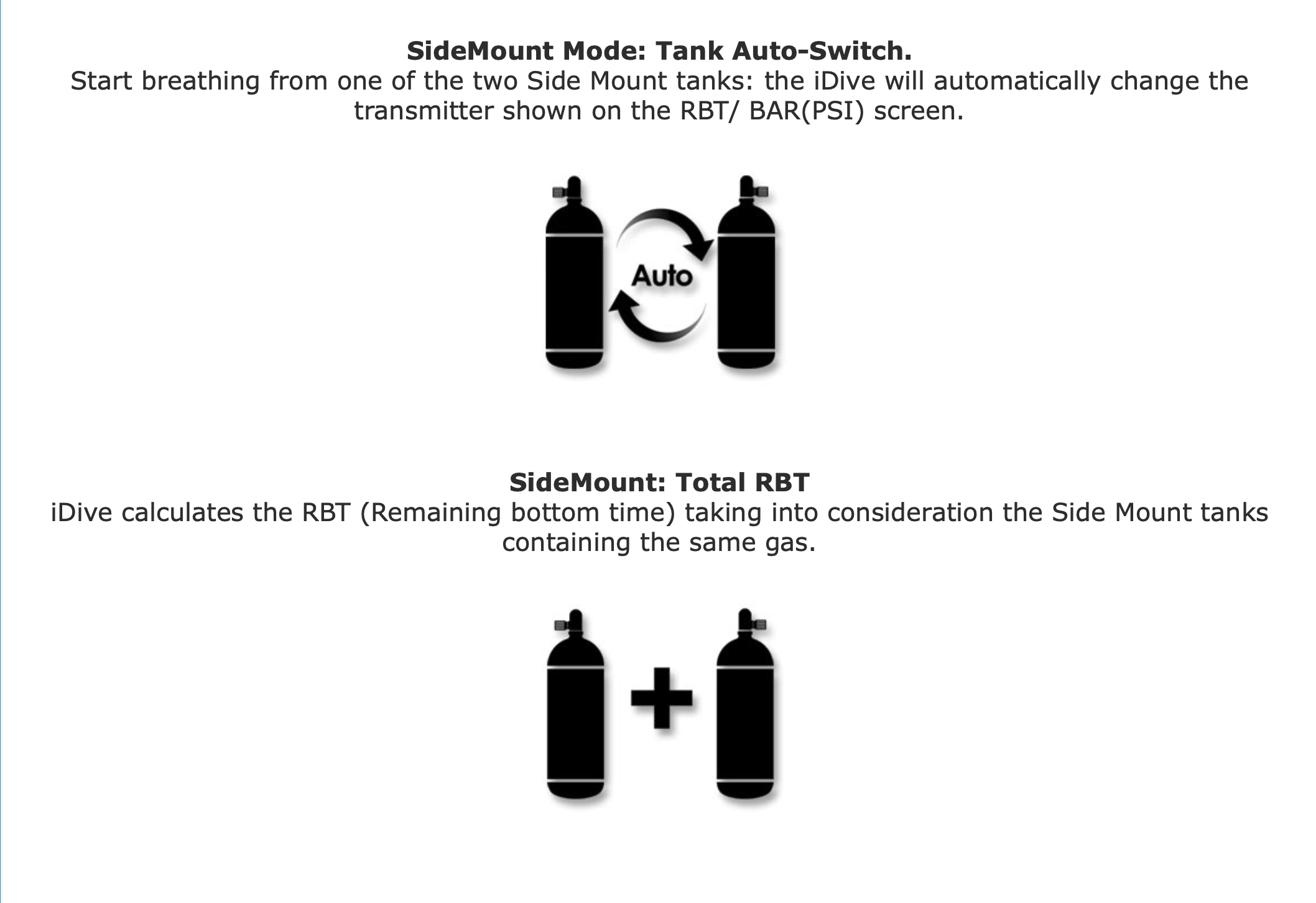
Lastly, this air transmitter unit is rechargeable via USB, which is a godsend, as it doesn’t require you to run around looking for hard-to-find batteries when your transmitter runs out of air on a dive vacation (because OF COURSE that is when it will run out of batteries).
SUMMARY
To me, a good computer should have an intuitive UI, a sensible algorithm which doesn’t assume divers are idiots and a display which presents dive information in an easy-to-understand manner.
The Ratio aces all of this. 4 button interface with context sensitive labels? Check. Standard Buhlmann ZHL16C without any silliness? Check. Massive display with clearly defined zones for various info? Check.
Having seen how often divers get confused between deco and NDL, I cannot emphasise how critical that last part is. All the information presented in a very intuitive manner – you won’t need to memorise the manual to learn what does what.
Add in some really unique features such as a user-friendly compass, LED air transmitters and the various deco functions, as well as the possibility to upgrade to more tech features if required, and you have possibly one of the best dive computers in the market
Highly recommended!
